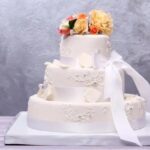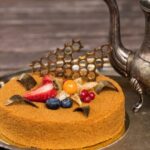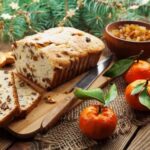Freezing cakes before decorating has become a common practice in the world of baking. It is a technique that allows bakers to prepare their cakes in advance and ensures optimum freshness and quality when it comes time to decorate. Many misconceptions surround the process of freezing cakes, but understanding the proper techniques and considerations can lead to successful results.
One of the main benefits of freezing cakes before decorating is the convenience it offers. By freezing a cake, you can have it prepared and ready for future occasions, eliminating the stress of last-minute baking. This is especially useful for those who frequently bake or professional bakers who need to cater to multiple clients. Additionally, freezing cakes can enhance their flavor and texture, as it allows time for the flavors to develop and settle.
Addressing some common misconceptions, many believe that freezing can negatively impact the taste or texture of a cake. However, when done correctly, freezing actually helps lock in moisture and keep the cake fresh. The key lies in understanding the basics of freezing cakes and following proper thawing techniques later on.
In order to achieve successful results when freezing cakes, it is important to understand the proper techniques involved. This includes choosing the right packaging or container to prevent moisture loss during freezing, as well as tips for maintaining maximum freshness and quality throughout the process. By familiarizing yourself with these fundamentals, you will be able to master the art of freezing and decorating cakes like a pro.
Understanding the Basics of Freezing Cakes
When it comes to freezing cakes before decorating, understanding the basics is essential for ensuring that your cake remains fresh and delicious. This section will provide you with the proper techniques, container options, and tips for maintaining maximum freshness and quality.
Proper Techniques for Freezing Cakes
To freeze a cake successfully, it is important to follow some key steps. First, allow the cake to cool completely after baking. Once cooled, wrap each layer tightly in plastic wrap to prevent moisture loss and freezer burn. Then, place the wrapped layers in a freezer-safe container or sealable freezer bag.
Choosing the Right Container or Packaging
The choice of packaging plays a crucial role in preserving the quality of frozen cakes. Opt for containers that are specifically designed for freezing cakes, or use heavy-duty aluminum foil or plastic wrap. These materials help to maintain the freshness of the cake by preventing exposure to air and potential contamination from other foods in the freezer.
Tips for Ensuring Maximum Freshness and Quality
There are several additional tips you can follow to ensure that your frozen cake remains fresh and flavorful. Consider labeling each wrapped layer with the date of freezing so that you know when it was frozen. Additionally, try to remove as much air as possible from the packaging before sealing it. This will help prolong the shelf life of the cake by reducing moisture loss and limiting exposure to oxygen.
By following these basic guidelines for freezing cakes, you can be confident that your baked creations will be ready for decorating whenever you need them.
Factors to Consider Before Freezing a Cake
Type of Cake and its Suitability for Freezing
Before freezing a cake, it is important to consider the type of cake you are working with and its suitability for freezing. While most cakes can be frozen without any issues, certain types may not hold up as well in the freezer.
Butter-based cakes, such as pound cakes or buttercream frosted cakes, are typically the best candidates for freezing. These types of cakes have a higher fat content which helps them retain moisture and texture during the freezing and thawing process.
On the other hand, sponge cakes or angel food cakes may not freeze as successfully. These types of cakes are lighter and tend to have a delicate texture. Freezing can cause them to become dense or dry. However, if you still want to freeze a sponge cake or angel food cake, there are techniques that can help preserve their quality, which will be discussed later in this article.
It is always recommended to check specific recipes or consult with experienced bakers when considering freezing different types of cakes, as they may have valuable insights on how specific recipes will withstand the freezing process.
Cake Fillings and Frostings: How They Affect Freezing and Thawing
When deciding whether to freeze a cake, it’s essential to take into account the fillings and frostings used in the cake. Some fillings and frostings freeze well while others do not.
For fillings like fruit preserves or mousse that contain high water content, freezing can cause ice crystals to form within the filling which may alter its texture upon thawing. It is generally advised to avoid using these types of fillings in layered cakes that will be frozen.
As for frostings, buttercream frostings tend to freeze well due to their high fat content. However, cream cheese frosting may separate or become grainy after being frozen. Whipped cream frosting should also be avoided as it can become watery and lose its structure when thawed. Consider using stabilized whipped cream if you want to include it in a frozen cake.
It is crucial to choose fillings and frostings that will remain stable and maintain their desired consistency throughout the freezing and thawing process to ensure the best possible outcome.
Dietary Restrictions and their Impact on Freezing Cakes
If you or your intended audience have specific dietary restrictions, such as gluten-free or vegan preferences, it is important to take these into consideration before freezing a cake. Certain dietary restrictions may impact the freezing process and require special techniques or ingredients.
Gluten-free cakes made with alternative flours tend to freeze well, although they may require slightly different storage times or thawing methods. Vegan cakes can also be successfully frozen, but it is important to make sure that any frosting or decorations used are also vegan-friendly.
Always refer to specific gluten-free or vegan recipes, guides, or consult with experts in these specialty areas of baking for the best results when freezing cakes that adhere to particular dietary restrictions.
The Optimal Freezing Time for Different Cakes
When it comes to freezing cakes before decorating, it’s important to consider the optimal freezing time for different types of cakes. The type of cake you are working with will determine how long you should freeze it for the best results. Here are some guidelines to follow:
- Butter-based cakes: It is recommended to freeze butter-based cakes for up to 2 months. These types of cakes have a higher fat content, which helps retain moisture during freezing and thawing. However, it’s important to wrap them tightly in plastic wrap or place them in an airtight container to prevent freezer burn.
- Sponge cakes and chiffon cakes: Sponge and chiffon cakes can be frozen for up to 3 months. These lighter and airy cakes are more delicate, so it’s crucial to handle them with care when freezing and thawing. It’s best to wrap them in plastic wrap or place them in a freezer bag to protect them from absorbing any odors.
- Specialty cakes (gluten-free, vegan, etc.): Specialty cakes typically have alternative ingredients that may affect their freezing duration. It is recommended to freeze these types of cakes for the same amount of time as butter-based or sponge cakes unless specified otherwise by the recipe or manufacturer.
It’s worth noting that regardless of the type of cake, it is important not to exceed the recommended freezing time as extended storage can affect the quality and freshness of the cake once thawed.
By following these guidelines, you can ensure that your cake remains fresh and moist when it comes time for decoration. Make sure you label your frozen cakes with the date they were frozen so you can keep track of their freshness. Next, we will explore the methods for properly thawing frozen cakes so that they are ready for decorating.
Methods for Properly Thawing Frozen Cakes
Thawing a frozen cake properly is essential to ensure that it maintains its texture, moisture, and flavor. Improper thawing can result in a dry or soggy cake, compromising the overall taste and presentation. Here are some techniques to safely thaw cakes:
- Refrigerator Method: This is the most recommended method for thawing cakes, as it allows for a slow and even thaw. Simply transfer the frozen cake from the freezer to the refrigerator and let it thaw overnight or for about 24 hours. Make sure to keep the cake in its packaging or container to prevent any condensation from forming on the surface.
- Room Temperature Method: If you’re short on time, you can thaw a frozen cake at room temperature. Remove the cake from its packaging and place it on a wire rack to thaw. This method can take anywhere from 2-4 hours, depending on the size of the cake. Keep an eye on the cake to ensure that it doesn’t become too soft or start sweating.
- Microwave Method (Partial Thaw): This method is suitable if you need to quickly defrost a small portion of a larger frozen cake. Start by removing any frost or ice crystals on the surface of the cake using a paper towel. Then, microwave the small portion at a low power level or using the defrost setting in short intervals (10-15 seconds at a time) until it reaches room temperature.
During the thawing process, it’s important to take precautions to avoid moisture loss and maintain freshness:
- Avoid Unwrapping: Resist the temptation to unwrap or expose your frozen cake during thawing. Opening up the packaging prematurely can lead to moisture loss and result in a dry cake.
- Patience is Key: Allow your cake enough time to thaw completely, whether you’re using the refrigerator or room temperature method. Rushing the process by applying heat or leaving it at room temperature for too long can negatively affect the texture and taste of the cake.
- Keep Away from Direct Heat: Avoid placing your frozen cake near direct heat sources such as radiators or stoves. This can cause uneven thawing and lead to a compromised texture.
Remember, different cakes may have slightly different thawing times, so it’s always best to follow the specific guidelines for each type of cake. By using proper thawing techniques, you can ensure that your freshly decorated cake maintains its quality and impresses your guests with its delicious taste and texture.
Preservation Techniques to Maintain Cake Freshness
When it comes to freezing cakes before decorating, it’s important to take extra steps to ensure that the cake maintains its freshness and quality. Proper preservation techniques play a crucial role in preventing moisture loss and preserving the taste and texture of the cake. Here are some key techniques to keep in mind:
- Additional steps to keep cake layers moist during freezing: To minimize the risk of dryness, consider brushing simple syrup onto each layer of the cake before freezing. The simple syrup will help retain moisture and add an extra layer of flavor. Be sure to let the syrup soak into the cake before wrapping or packaging.
- The use of plastic wrap, foil, or freezer bags: Packaging is essential for maintaining freshness during freezing. Wrap each individual layer tightly with plastic wrap or aluminum foil to prevent exposure to air and potential freezer burn. Alternatively, you can place the wrapped layers in freezer bags for added protection.
- Freezing cakes with or without frosting: When deciding whether to freeze a cake with or without frosting, consider your specific needs and preferences. Freezing a frosted cake can save time during the decorating process but may result in slight changes in texture upon thawing. If you choose to freeze a frosted cake, make sure that the frosting is well-set before wrapping it with plastic wrap or placing it in a container.
| Preservation Technique | Description |
|---|---|
| Additional Moisture Retention | Brushing simple syrup onto each layer before freezing helps retain moisture and adds flavor. |
| Proper Packaging | Tightly wrap individual layers with plastic wrap or foil, or use freezer bags for added protection. |
| Freezing with or without Frosting | Consider personal preferences when deciding to freeze a cake with or without frosting, keeping in mind the potential texture changes upon thawing. |
By following these preservation techniques, you can maximize the freshness and quality of your cakes even after they have been frozen. These methods will help ensure that your cakes are ready to be decorated and enjoyed whenever you need them.
Addressing Common Concerns and Questions
One common concern when it comes to freezing cakes before decorating is whether it will have any effect on the texture or flavor of the cake. The good news is that when done properly, freezing does not significantly alter the taste or texture of the cake. In fact, freezing can actually help in retaining moisture and freshness.
To prevent any negative effects on texture and flavor, it is important to wrap the cake tightly with plastic wrap or foil before storing it in an airtight container or freezer bag. This will prevent any freezer burn and protect the cake from absorbing any unwanted odors from other foods in the freezer.
It is also recommended to thaw the cake slowly by transferring it from the freezer to the refrigerator overnight rather than thawing it at room temperature, as this allows for a more gradual thawing process and reduces the risk of moisture loss.
Another concern that often arises is how to prevent freezer burn on cakes. Freezer burn occurs when food (in this case, cake) is exposed to air in the freezer for extended periods of time. To avoid this, make sure to remove as much air as possible from the packaging before freezing. This can be done by using vacuum-sealed bags or by pressing out excess air when using plastic wrap or foil.
Lastly, many wonder if it is possible to freeze fully decorated cakes. While technically possible, it is generally not recommended to freeze cakes that have already been fully decorated. The decorations may become damaged or lose their shape during freezing and thawing, leading to an undesirable appearance. For best results, it is advised to freeze cakes without frosting and add decorations after they have been thawed.
Overall, addressing these common concerns and questions regarding freezing cakes before decorating helps ensure successful results and a delicious end-product. Taking proper precautions such as wrapping tightly, preventing freezer burn, and avoiding fully decorated cakes will help maintain both the quality and aesthetics of your frozen cake.
Expert Tips and Tricks for Freezing and Decorating Cakes
When it comes to freezing and decorating cakes, there are a few expert tips and tricks that can elevate your cake-making game. Whether you’re a seasoned baker or just starting out, these techniques will help you achieve stellar decoration results while maintaining the freshness of your cake.
One important tip is to freeze your cake layers individually before assembling them. This ensures that each layer freezes evenly and makes it easier to handle during the decorating process. To do this, wrap each cooled cake layer tightly in plastic wrap or place them in separate freezer bags. Be sure to label each layer with the type of cake and date of freezing for easy reference later on.
Another tip is to freeze your cakes without any frosting or decorations. While it may be tempting to freeze a fully decorated cake, doing so can lead to smudging or melting of the decorations during thawing. Instead, frost and decorate the cake after it has thawed completely. This not only preserves the quality of the decorations but also allows you to adjust and improve them if needed.
When it comes to handling decorations during freezing and thawing, delicate sugar flowers or fragile fondant details should be added after thawing the cake. These decorations can become brittle or lose their shape if exposed to freezing temperatures for too long. By adding them at the last minute, you ensure their integrity and keep your cake looking beautiful.
With multi-tiered cakes, freezing can pose a challenge as it’s important to maintain stability between layers. One expert technique is to partially freeze each tier separately before assembling them into a complete cake. This helps prevent slippage or uneven settling while allowing you more control over the decorating process.
Conclusion
In conclusion, mastering the art of freezing and decorating cakes can greatly enhance the quality and convenience of your baking experience. Freezing cakes before decorating has proven to be a common practice with numerous benefits. Not only does it extend the shelf life of cakes, but it also allows for easier handling and smoother decoration. We have addressed common misconceptions and provided tips for ensuring maximum freshness and quality when freezing cakes.
Understanding the basics of freezing cakes is crucial to achieving desirable results. Proper techniques such as selecting the right container or packaging will help preserve the cake’s texture and flavor. It is also important to consider factors such as the type of cake, fillings, frostings, dietary restrictions, and their impact on the freezing process.
Knowing the optimal freezing times for different cakes ensures that they maintain their taste and texture after thawing. Whether you are working with butter-based cakes, sponge cakes, or specialty cakes like gluten-free or vegan options, following recommended freezing durations will yield excellent results.
Thawing frozen cakes properly is just as important as freezing them correctly. Techniques such as gradual thawing at room temperature or using refrigeration should be employed to avoid moisture loss and prevent any adverse effects on taste and texture.
By following preservation techniques during freezing, you can maintain the freshness and moistness of your cake layers. Utilizing plastic wrap, foil, or freezer bags can provide an additional layer of protection against freezer burn. The decision to freeze cakes with or without frosting depends on personal preferences and specific requirements.
Addressing common concerns about cake texture or flavor alteration when frozen ensures a satisfying end result. Taking preventive measures against freezer burn will guarantee optimum taste. While fully decorated cakes may not be ideal candidates for freezing due to potential damage during thawing, experimenting with decorations while freezing tiered cakes opens up a realm of possibilities.
Frequently Asked Questions
Is it OK to freeze cake before decorating?
Yes, it is perfectly fine to freeze a cake before decorating it. Freezing the cake helps to firm it up and make it easier to handle during the decorating process.
This is particularly useful for moist and delicate cakes that may crumble or break apart easily when trying to frost and decorate them. By freezing the cake, you can also reduce the risk of creating messy crumbs while applying frosting or other decorations.
How long should you freeze a cake before frosting it?
The recommended duration for freezing a cake before frosting it varies depending on factors such as the size of the cake, its moisture content, and personal preference. Generally, it is advisable to freeze a cake for at least 1-2 hours before applying frosting.
This brief period of time allows the cake to firm up slightly without becoming completely frozen solid. However, if you have limited time or are in a rush, even just 30 minutes in the freezer can be helpful in making the cake easier to work with.
How long can I freeze cake for decorating?
In terms of how long you can freeze a cake specifically for decorating purposes, it is generally recommended not to exceed three months in the freezer. Cakes that are frozen beyond this timeframe might start losing their freshness and flavor.
While properly wrapped cakes can still be safe to eat beyond three months, there might be some quality degradation in terms of taste and texture. Therefore, it’s best to plan your baking and decorating schedule accordingly, allowing sufficient time within this three-month window for freezing and subsequent decoration without compromising on taste.

Welcome to my blog about home and family. This blog is a place where I will share my thoughts, ideas, and experiences related to these important topics. I am a stay-at-home mom with two young children. I hope you enjoy reading it! and may find some helpful tips and ideas that will make your home and family life even better!





